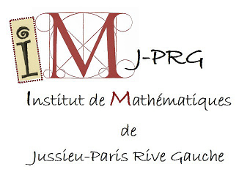| Résume | Fraisse classes are those classes F of finite structures satisfying the Hereditary Property (HP), the Joint Embedding Property (JEP), and the Amalgamation Property (AP). The JEP allows one to build some countably infinite structure K whose age (the collection of finite structures which embed into K) is the class F that we started with. If AP also holds, then there is a canonical such K which we denote K_F, the Fraisse limit of the class. One can interpret this fact dynamically by considering the action of the group S_\infty on the space X_F of countable structures whose age is contained in F. One can give X_F a natural Polish topology, and the theorem of Fraisse is precisely the fact that this action has a comeager orbit. However, Ivanov, and later Kechris-Rosendal, isolated a strictly weaker property, the Weak Amalgamation Property (WAP), which also guarantees that the space X_F has a comeager orbit. This gives rise to a natural question: can we detect the difference between AP and WAP from the dynamical point of view? This talk will discuss an affirmative answer, linking these amalgamation properties to the dynamical notion of a highly proximal extension. |

